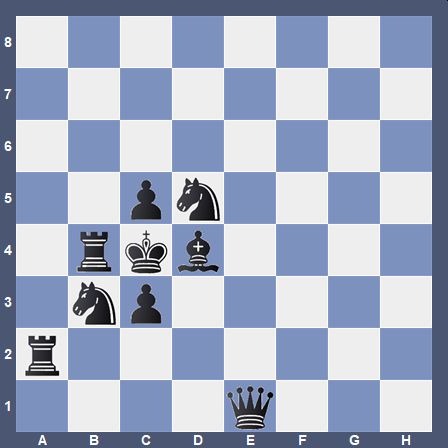.jpeg)

.jpeg)

This is a highly unusual chess puzzle. Your task is to place a white king and a white bishop on the board so that White to move can mate in two moves.
There is a second task: once you have found the solution, you must show how the position could have arisen in a normal game of chess – i.e. reconstruct the last two legal moves before the position with the king and bishop.
Warning: it is a very difficult puzzle, one I was unable to solve. And if you are looking for something even more challenging, how about:

Each letter stands for a specific black or white piece type. Reconstruct the position.
This may look extremely daunting, but it is possible to solve with purely logical thinking. Believe me, there is only one possible legal solution. And it generates a great feeling of pride when you have worked everything out.
A hint: C, D and E are the only letters that can stand for the white and black kings, since there can be only one of each on the board. And because kings cannot stand on adjacent squares, it must be C and E that translate to the kings.
You may not believe it, but it is possible to deduce the entire position in the same way. This time it is definitely advisable to fetch the chessboard and pieces – they are somewhere in the cupboard in your workroom – and use them to make progress. But another warning: it may require a lot of thinking time, so schedule this to accommodate for the New Year's celebration you have planned.
We hope you have enjoyed these truly unusual problems. If you feel up to it, do try to compose similar puzzles yourself. Your submissions will take part in our Composition Contest.
Please submit your compositions here
Friends, we have switched on feedback commentary. Naturally, you should not post any solutions! Just tell us whether you enjoyed the puzzles, struggled with them, and if you were able to solve them yourself. In a special solution page we will show you how twp well-known (and very strong) grandmasters fared with these unusual puzzles. And that they will encourage you to venture into the fascinating world of chess composition.